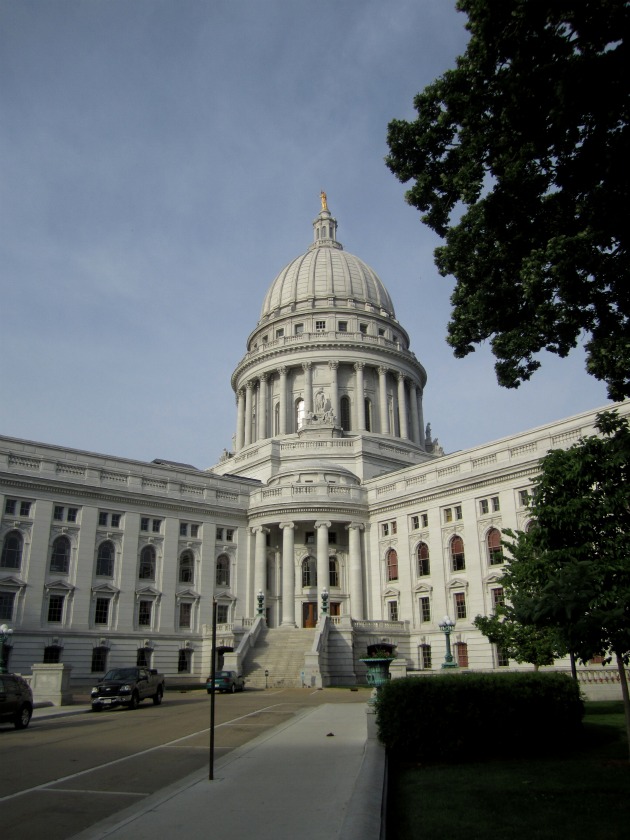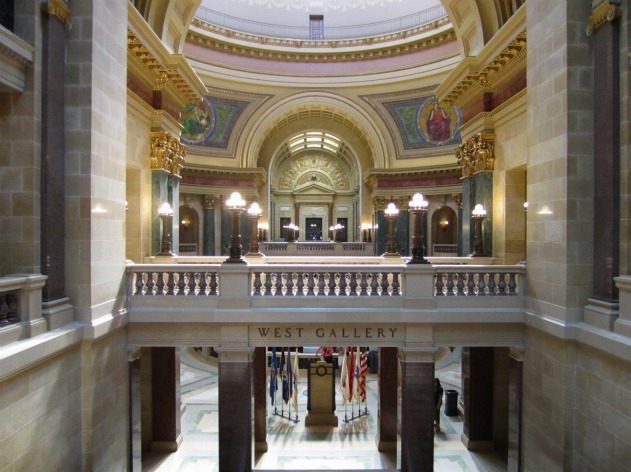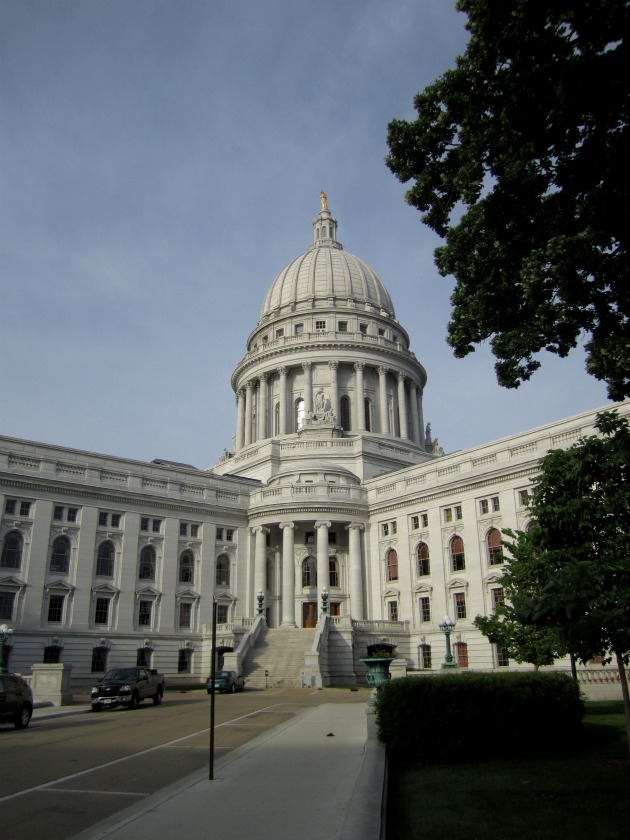 The Wisconsin State Capitol Building.Photo: Sarah GoodyearI wrote back in January about the importance of public space and urban design in the Egyptian revolution, and more generally about the role it plays in the ability of people to protest the actions of their governments and demand political change.
The Wisconsin State Capitol Building.Photo: Sarah GoodyearI wrote back in January about the importance of public space and urban design in the Egyptian revolution, and more generally about the role it plays in the ability of people to protest the actions of their governments and demand political change.
Well, last week I was in Madison, Wisc., for the conference of the Congress for the New Urbanism, and just a few blocks away from the convention center is the Wisconsin State Capitol Building, designed by George Browne Post and completed in 1914. This magnificent edifice and the gracious park that surrounds it were the scene of intense protests against the union-busting policies of Republican Gov. Scott Walker throughout February and March of this year.
The grandeur of the Capitol building, which stands at the center of the city and is surrounded by vibrant shopping streets, is a point of pride for the citizens of Wisconsin. When it was occupied by protesters, its symbolism became even more intense. It was the closest thing to Tahrir Square that we’ve had in the U.S. recently — although in true Wisconsin fashion, the gathering was amazingly civil and orderly.
The building’s interior is no longer a protest site (the Walker administration took care of that) but while I was in Madison, the city issued a permit allowing people to camp out on a couple of the streets across from the Capitol. They’re calling their encampment “Walkerville,” in honor of the Hoovervilles that sprang up during the Depression.
On Saturday evening I spent some time talking with the folks setting up Walkerville, as well as with a business owner on the square who wasn’t particularly impressed by the action. But they all agreed on one thing: the importance of this public space to their city and the relationship of its citizens to the government.
 The Capitol building interior, as grand as any in the world.Photo: Sarah Goodyear
The Capitol building interior, as grand as any in the world.Photo: Sarah Goodyear
 Walkerville.Photo: Sarah GoodyearEarlier that day, I had toured the Capitol. You have to go through a metal detector to get in now, and certain items like signs are restricted, but you can wander about pretty much at will once you’re through. It’s one of the most impressive public buildings I have ever been in. Every stone in it, every bit of gold leaf, makes a statement about the importance of the people of the state of Wisconsin. The message this building sends is that the enterprise of government is a grand and solemn thing, that the trust between the electorate and the elected should be sacred.
Walkerville.Photo: Sarah GoodyearEarlier that day, I had toured the Capitol. You have to go through a metal detector to get in now, and certain items like signs are restricted, but you can wander about pretty much at will once you’re through. It’s one of the most impressive public buildings I have ever been in. Every stone in it, every bit of gold leaf, makes a statement about the importance of the people of the state of Wisconsin. The message this building sends is that the enterprise of government is a grand and solemn thing, that the trust between the electorate and the elected should be sacred.
That’s what they thought in 1914. In 2011, the well-planned streets around the grand building are sending their own message, despite the flimsiness of the tents that line them.



